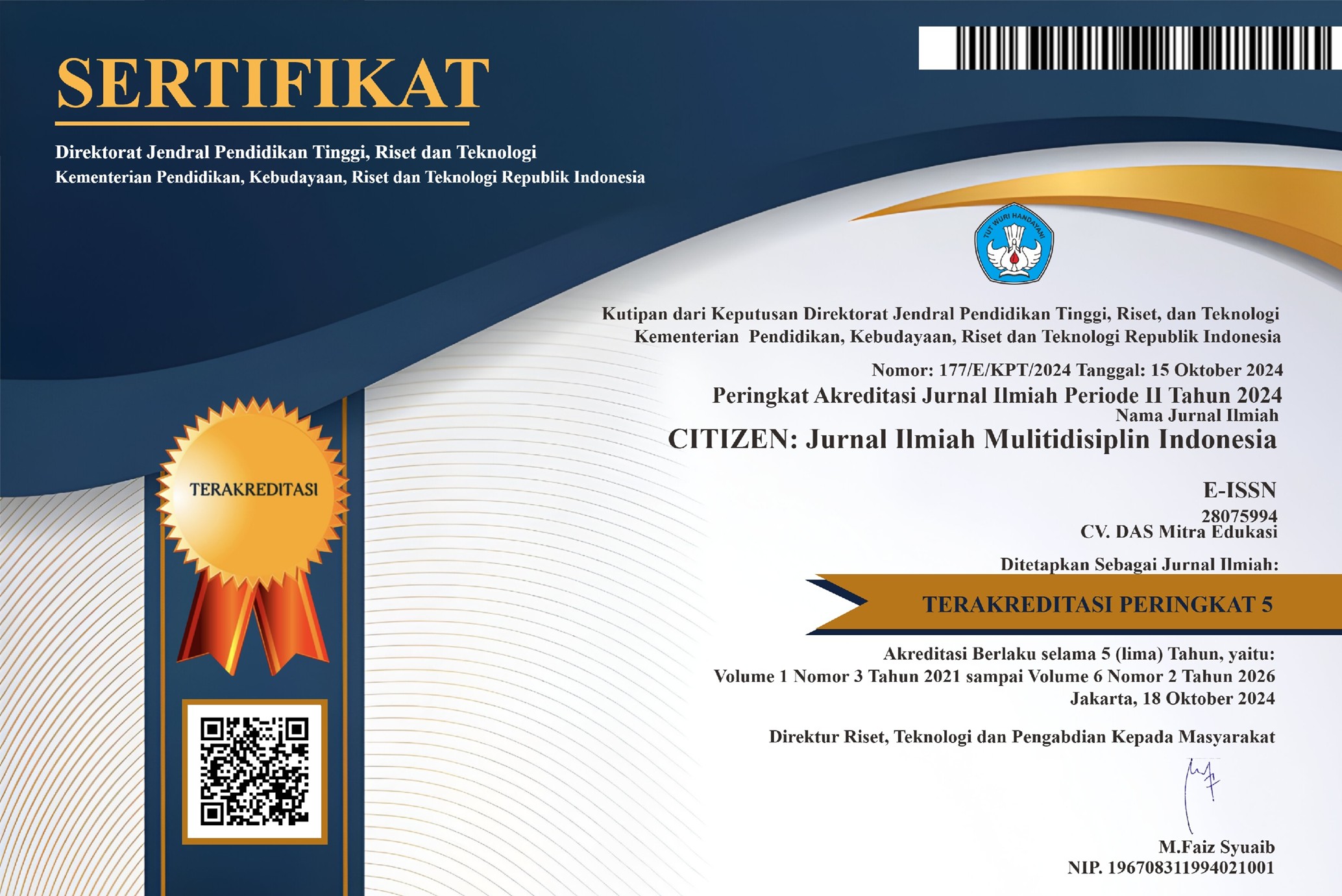Human Capital Accounting: A Literature Review Of Valuation, Disclosure, and Organizational Impact
DOI:
https://doi.org/10.53866/jimi.v5i4.939Keywords:
Human Capital Accounting, Valuation Models, Disclosure, Organizational Performance, Intangible AssetsAbstract
This study conducts a systematic literature review to explore the development of Human Capital Accounting (HCA) in the last decade, focusing on three primary areas: valuation approaches, disclosure practices, and organizational impact. A total of 21 articles were selected using the PRISMA protocol from reputable databases. The analysis reveals that no single method dominates the valuation of human capital. Instead, multiple frameworks—such as cost-based, income-based, and efficiency-based models—are applied, often in combination. The Value Added Intellectual Coefficient (VAIC) model and Data Envelopment Analysis (DEA) have gained traction as practical tools for measuring human capital efficiency. In terms of disclosure, voluntary reporting of human capital information is increasing, though inconsistencies remain across firms and sectors. Enhanced disclosure practices are positively associated with firm value and stakeholder confidence, especially in integrated reporting contexts. Finally, the organizational impact of HCA is evident in improved financial performance, productivity, and strategic decision-making, particularly when human capital is integrated with broader organizational planning. The study concludes that while the field remains fragmented, there is a growing consensus on the critical role of human capital in value creation. Future research should focus on standardizing measurement and reporting practices to strengthen the strategic role of HCA in corporate governance and sustainability.
References
Abeysekera, I. (2008). Motivations behind human capital disclosure in annual reports. Accounting Forum, 32(1), 16–29. https://doi.org/10.1016/j.accfor.2006.11.006
Al-Qudah, S., & Obeidat, A. (2020). The impact of strategic human resources planning on the organizational performance of public shareholding companies in Jordan. Problems and Perspectives in Management, 18(1), 219–230. https://doi.org/10.21511/ppm.18(1).2020.19
Das, K., & Mohapatra, A. (2020). Disclosure practices of human capital in selected Indian companies: An empirical study. Journal of Critical Reviews, 7, 140–148. https://doi.org/10.31838/jcr.07.04.25
Desoky, A. M., & Mousa, G. A. H. (2020). The impact of intellectual capital on firm’s financial performance: Empirical evidence from Bahrain. Investment Management and Financial Innovations, 17(4), 189–201. https://doi.org/10.21511/imfi.17(4).2020.18
Feliana, Y. K., & Novita, E. (2022). Value relevance human capital information on the annual report of Indonesia listed companies. Jurnal Keuangan dan Perbankan, 22(4), 1–13. https://doi.org/10.26905/jkdp.v22i4.1945
Ferraro, O., & Cristiano, E. (2019). Valuation of human capital: A review of studies on quali‑quantitative methods. International Journal of Business and Management, 14(11), 165–185. https://doi.org/10.5539/ijbm.v14n11p165
Gamerschlag, R. (2013). Value relevance of human capital information. Journal of Intellectual Capital, 14(2), 325–345. https://doi.org/10.1108/14691931311323913
Halim, K. (2024). The importance of intellectual capital in driving firm performance. Accounting Analysis Journal, 12(3), 190–198. https://doi.org/10.15294/aaj.v12i3.75257
Haji, A. A., & Mubaraq, S. (2012). The trends of intellectual capital disclosure: Evidence from the Nigeria banking sector. Journal of Human Resource Costing & Accounting, 16(3), 184–209. https://doi.org/10.1108/14013381211286360
Hilorme, T., Shurpenkova, R., Kundrya-Vysotska, O., Sarakhman, O., & Lyzunova, O. (2019). Model of energy saving forecasting in entrepreneurship. Journal of Entrepreneurship Education, 22(1S).
Hilorme, T., Zamazii, O., Judina, O., Korolenko, R., & Melnikova, Y. (2019). Formation of risk mitigating strategies for the implementation of projects of energy saving technologies. Academy of Strategic Management Journal, 18(3).
Ifleh, Y., Lotfi, M., & Elkabbouri, M. (2018). Rethinking value creation from the resource-based view: The case of human capital in Moroccan hotels. https://doi.org/10.48550/arXiv.1805.05465
Islam, M. S., & Amin, M. (2022). A systematic review of human capital and employee well-being: Putting human capital back on the track. European Journal of Training and Development, 46(5/6), 504–534. https://doi.org/10.1108/EJTD-12-2020-0177
Lin, L., Huang, I., Du, P., & Lin, T. (2012). Human capital disclosure and organizational performance: The moderating effects of knowledge intensity and organizational size. Management Decision, 50(10), 1790–1799. https://doi.org/10.1108/00251741211279602
Mejía de León, J. L., Solís, M., & Flores, R. (2021). Evaluating the efficiency of human capital at small and medium enterprises in the manufacturing sector using the DEA‑Weight Russell Directional Distance Model. Economies, 11(10), 261. https://doi.org/10.3390/economies11100261
Merriman, K. (2017). Income approach to value. In The valuation of intangible assets in global operations (pp. 48–75). Springer. https://doi.org/10.1007/978-3-319-58934-3_5
Micah, L., Ofurum, C., & Ihendinihu, J. (2012). Firms’ financial performance and human resource accounting disclosure in Nigeria. International Journal of Business and Management, 7(14), 67–67. https://doi.org/10.5539/ijbm.v7n14p67
Onoue, S., Hata, H., Kula, R., & Matsumoto, K. (2018). Human capital in software engineering: A systematic mapping of reconceptualized human aspect studies. https://doi.org/10.48550/arXiv.1805.03844
Onyekwelu, U. L. F., Osisioma, B. C., & Ugwuanyi, U. B. (2015). Impact of human capital accounting on corporate financial performance: A study of selected banks in Nigeria. European Journal of Accounting, Auditing and Finance Research, 3(5), 90–107.
Pujiastuti, N., & Rahmawati, I. P. (2023). Pengungkapan human capital, nilai perusahaan dan cost of capital pada perusahaan manufaktur di Indonesia. Jurnal Akuntansi dan Bisnis, 24(2), 45–60. https://doi.org/10.20961/jab.v23i2.1027
Salvi, A., Raimo, N., Petruzzella, F., & Vitolla, F. (2022). The financial consequences of human capital disclosure as part of integrated reporting. Journal of Intellectual Capital, 23(6), 1221–1245. https://doi.org/10.1108/JIC-03-2021-0079
Sveiby, K.-E. (1997). The intangible assets monitor. Journal of Human Resource Costing & Accounting, 2(1), 73–97. https://doi.org/10.1108/eb029036
Shubita, M. F. (2023). The effect of human capital and structural capital on leverage: Evidence from Jordan. Problems and Perspectives in Management, 21(3), 1–10. https://doi.org/10.21511/ppm.21(3).2023.01
Zeghal, D., & Maaloul, A. (2010). Analysing value added as an indicator of intellectual capital and its consequences on company performance. Journal of Intellectual Capital, 11(1), 39–60. https://doi.org/10.1108/14691931011013325
Downloads
Published
How to Cite
Issue
Section
License
Copyright (c) 2025 Dimas Prasetia, Sausan Nuhaa Maisarah

This work is licensed under a Creative Commons Attribution-ShareAlike 4.0 International License.




















